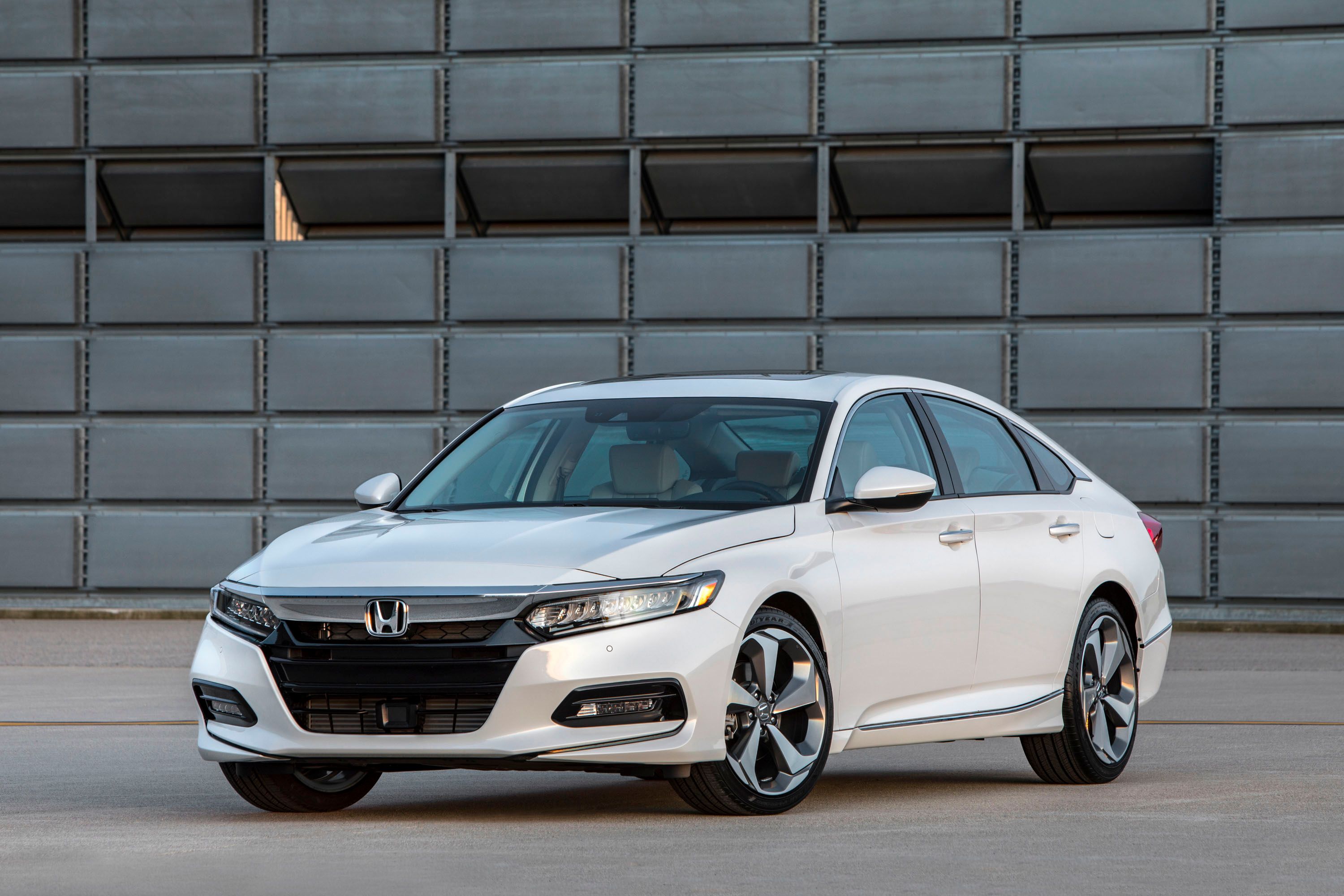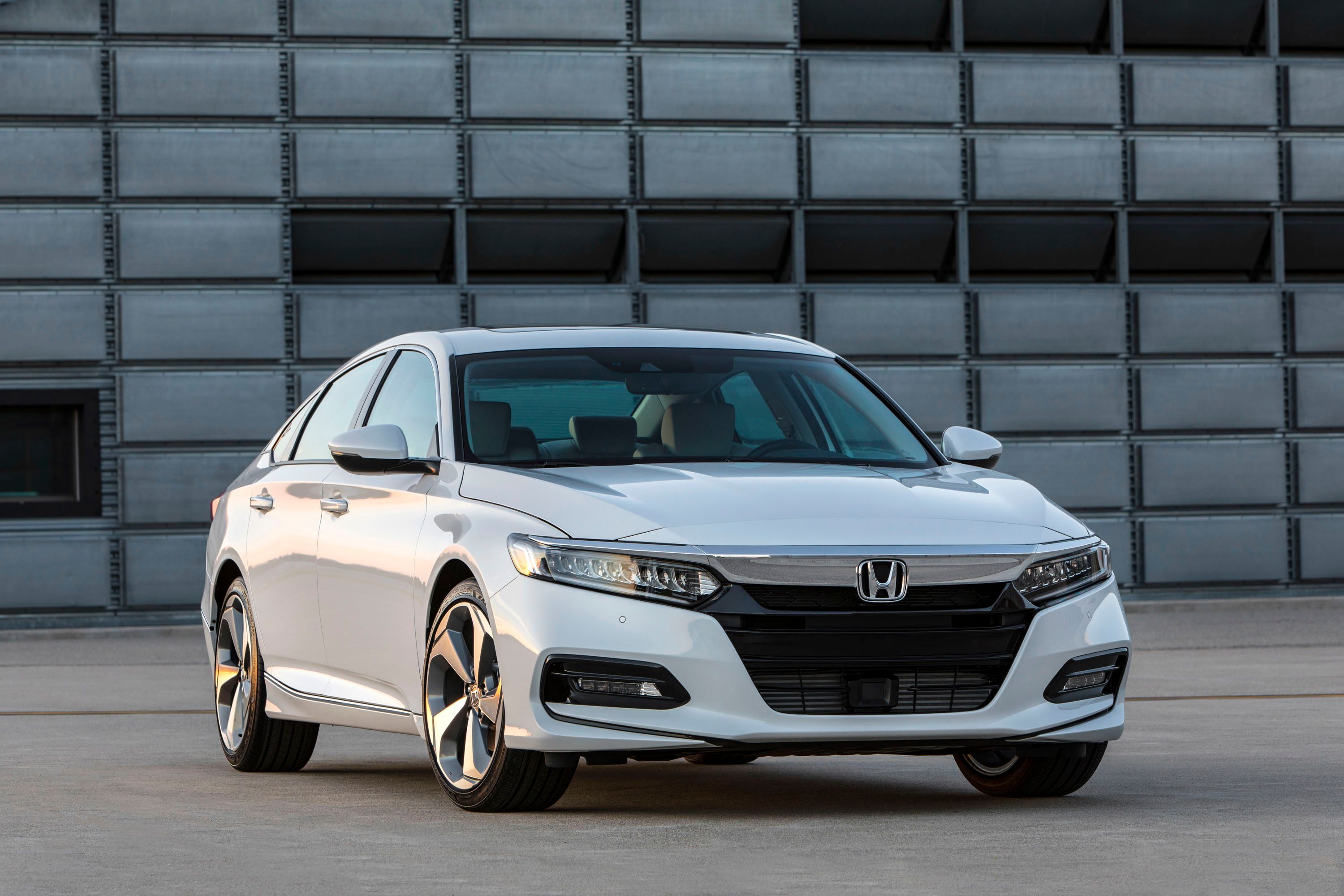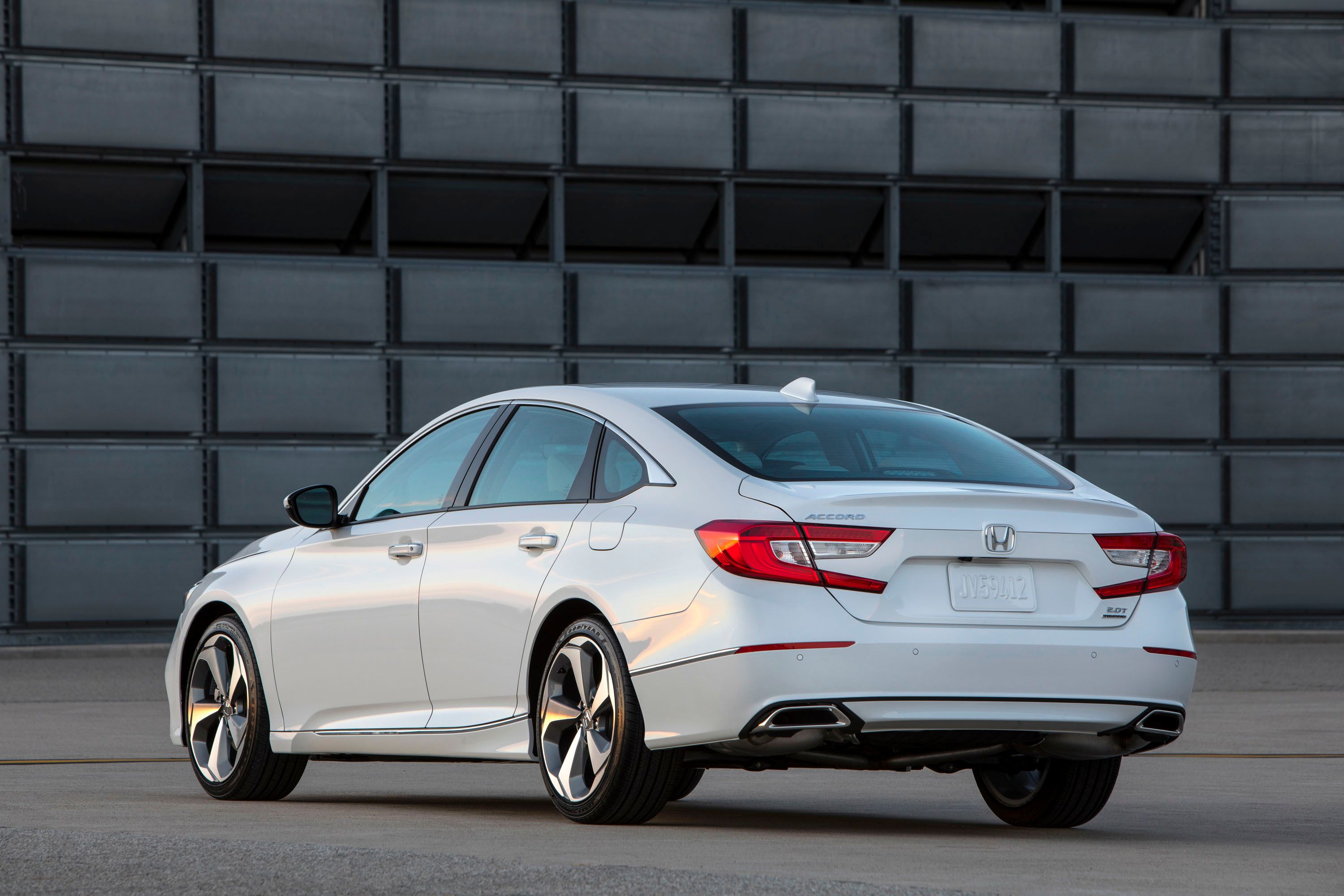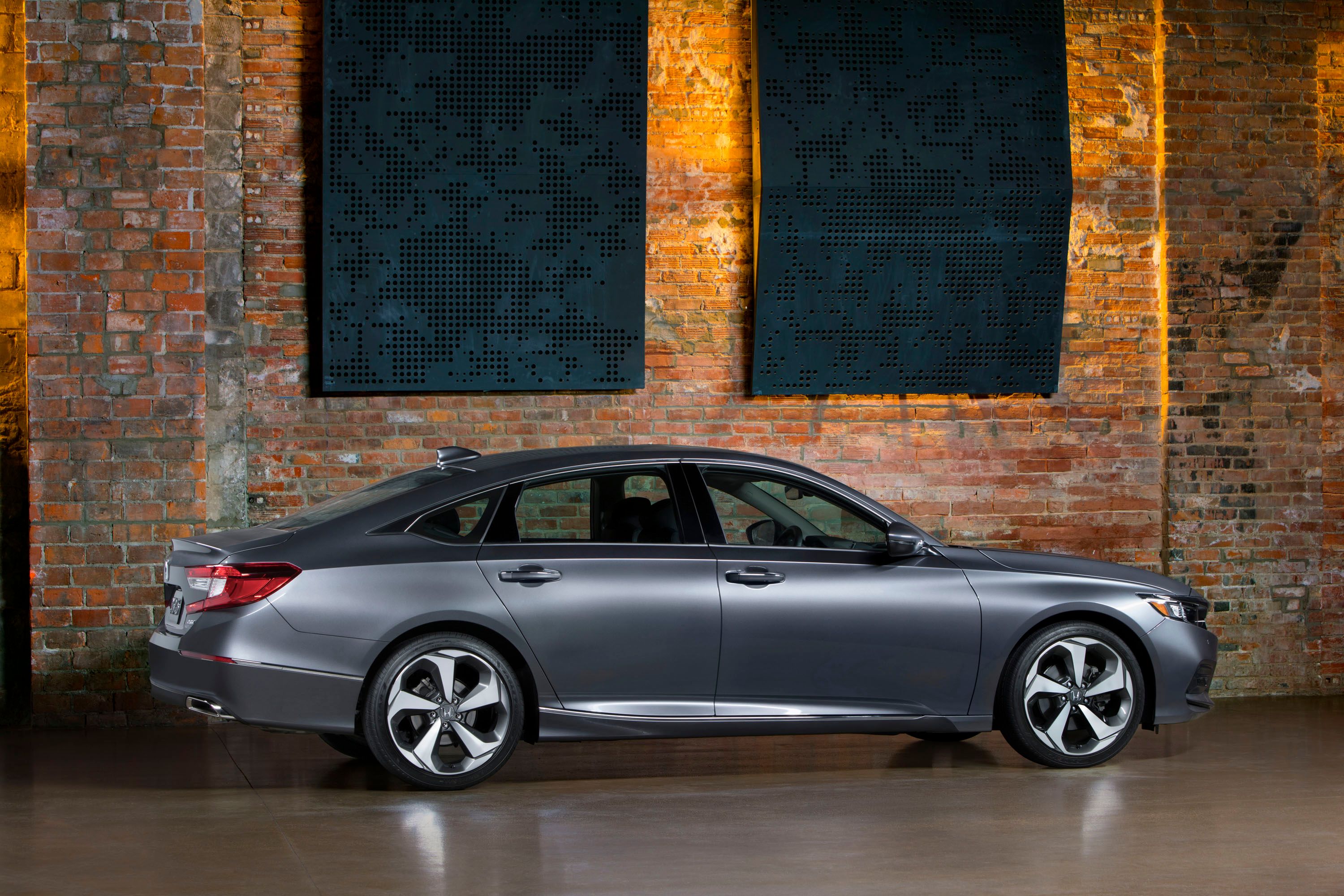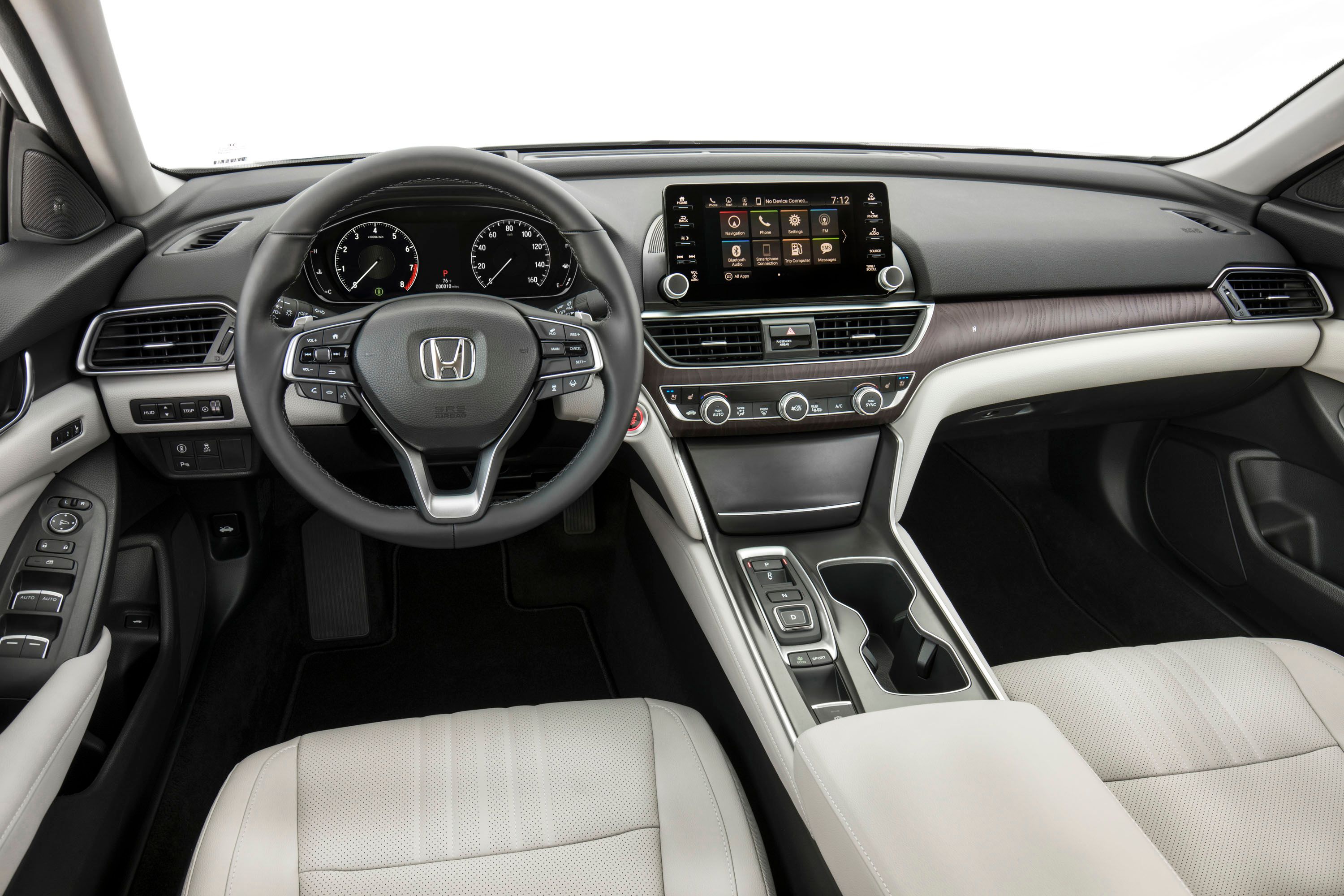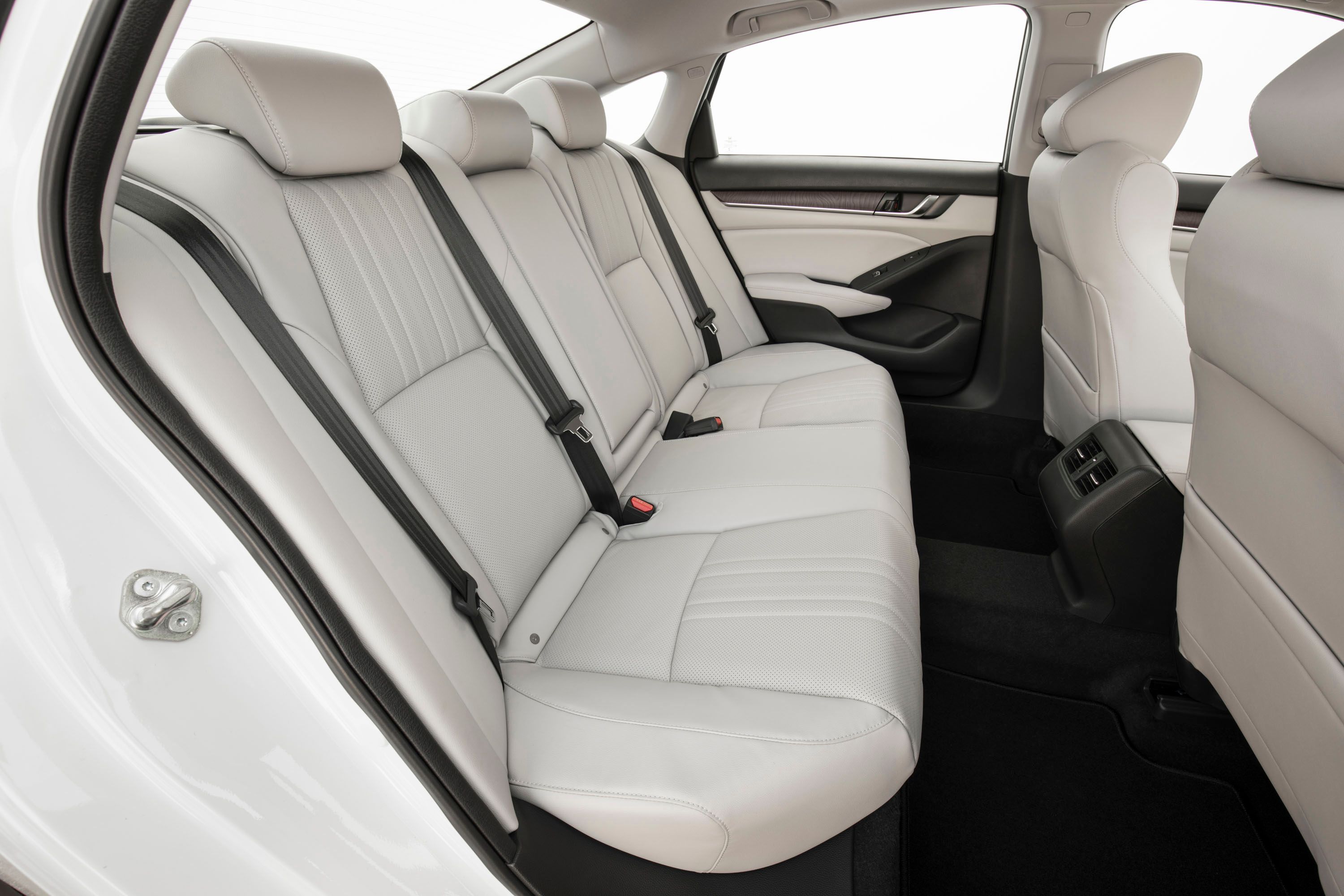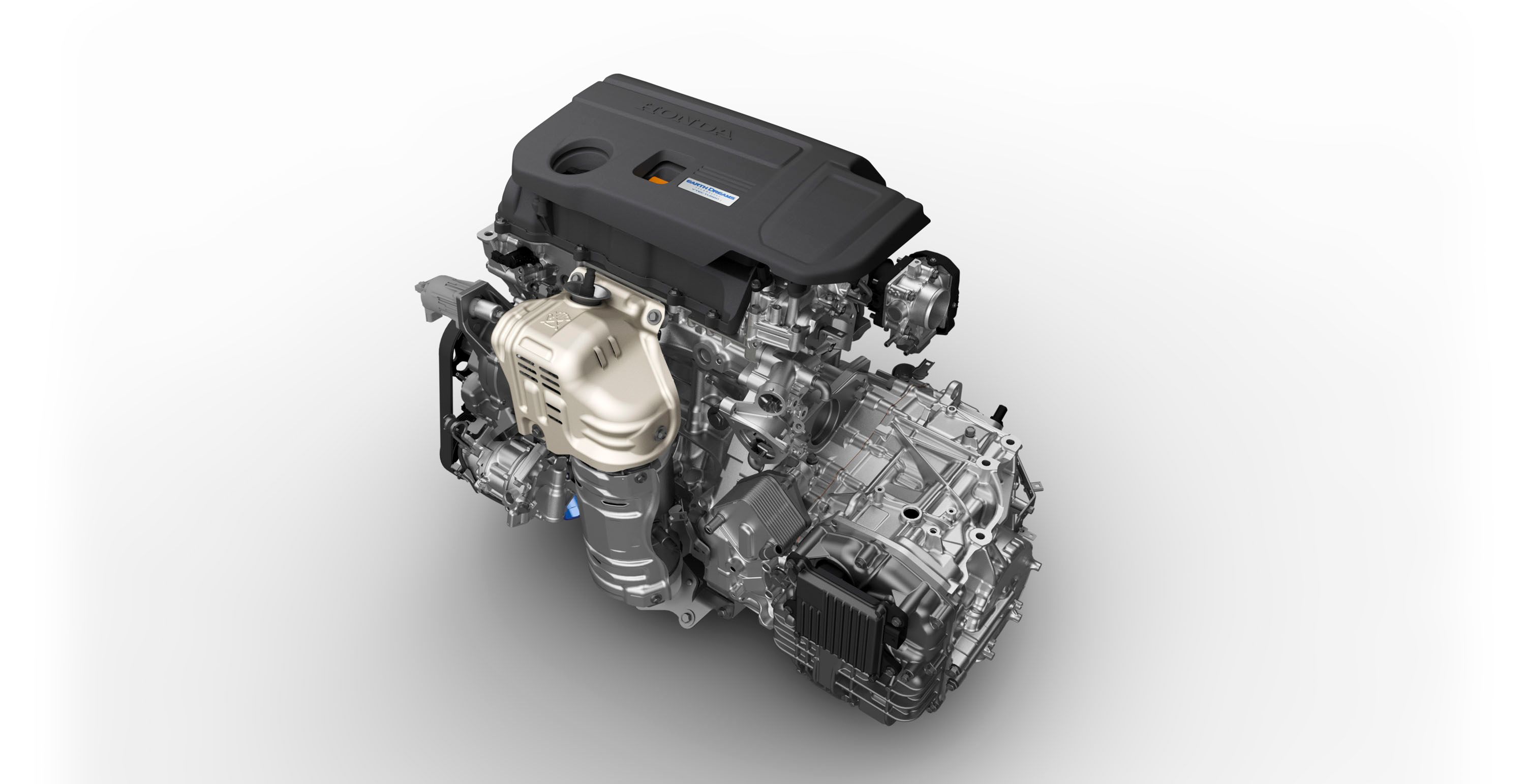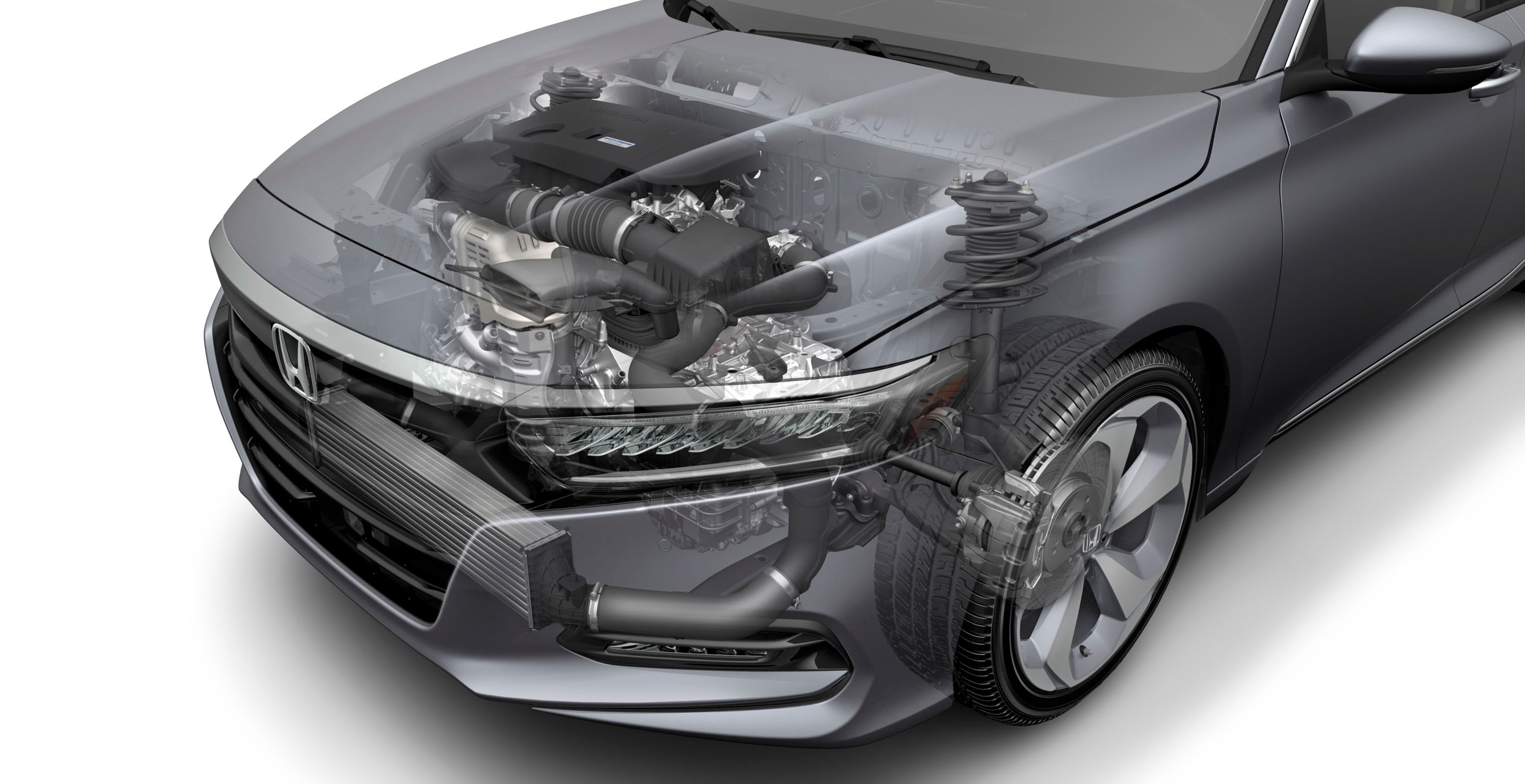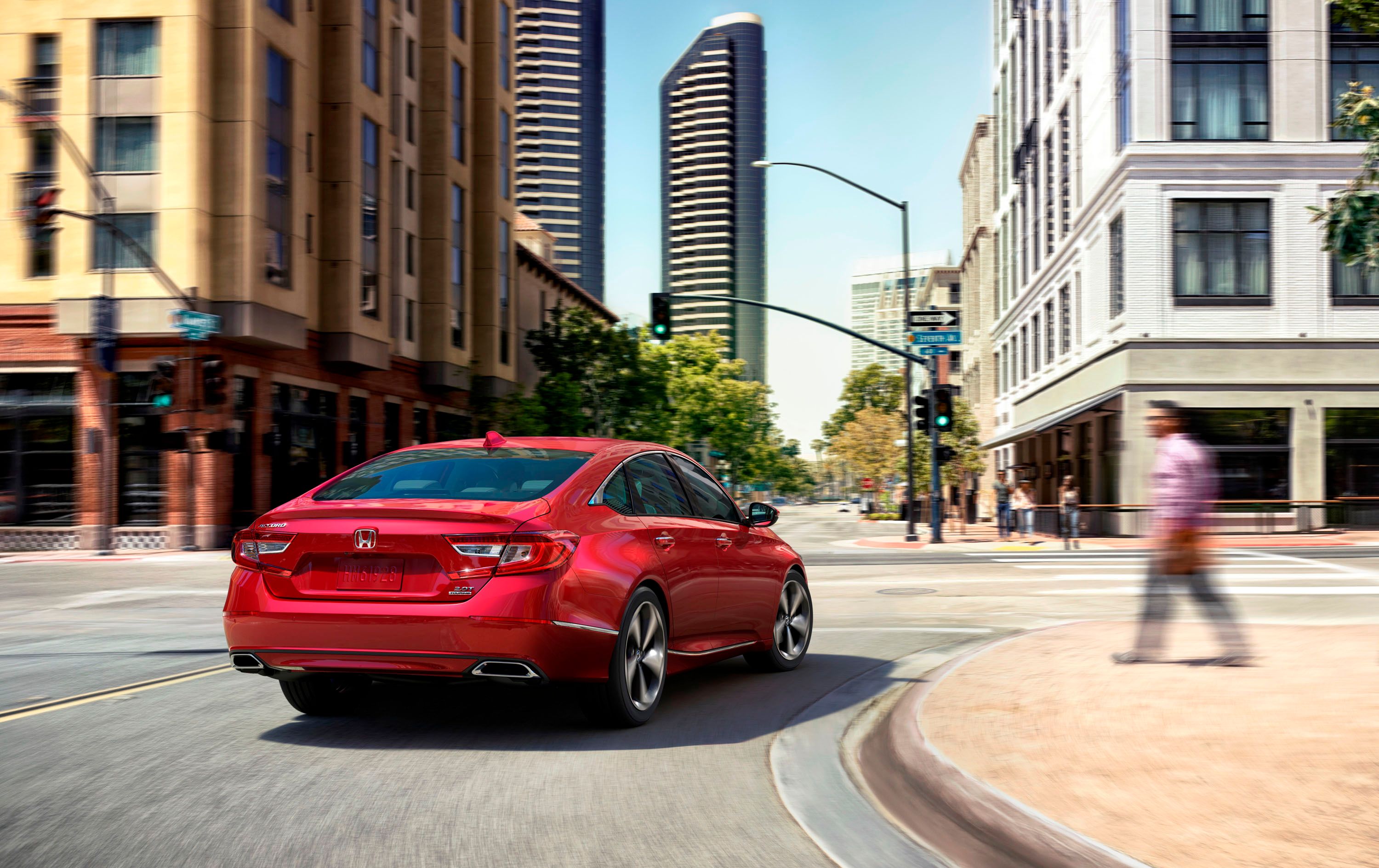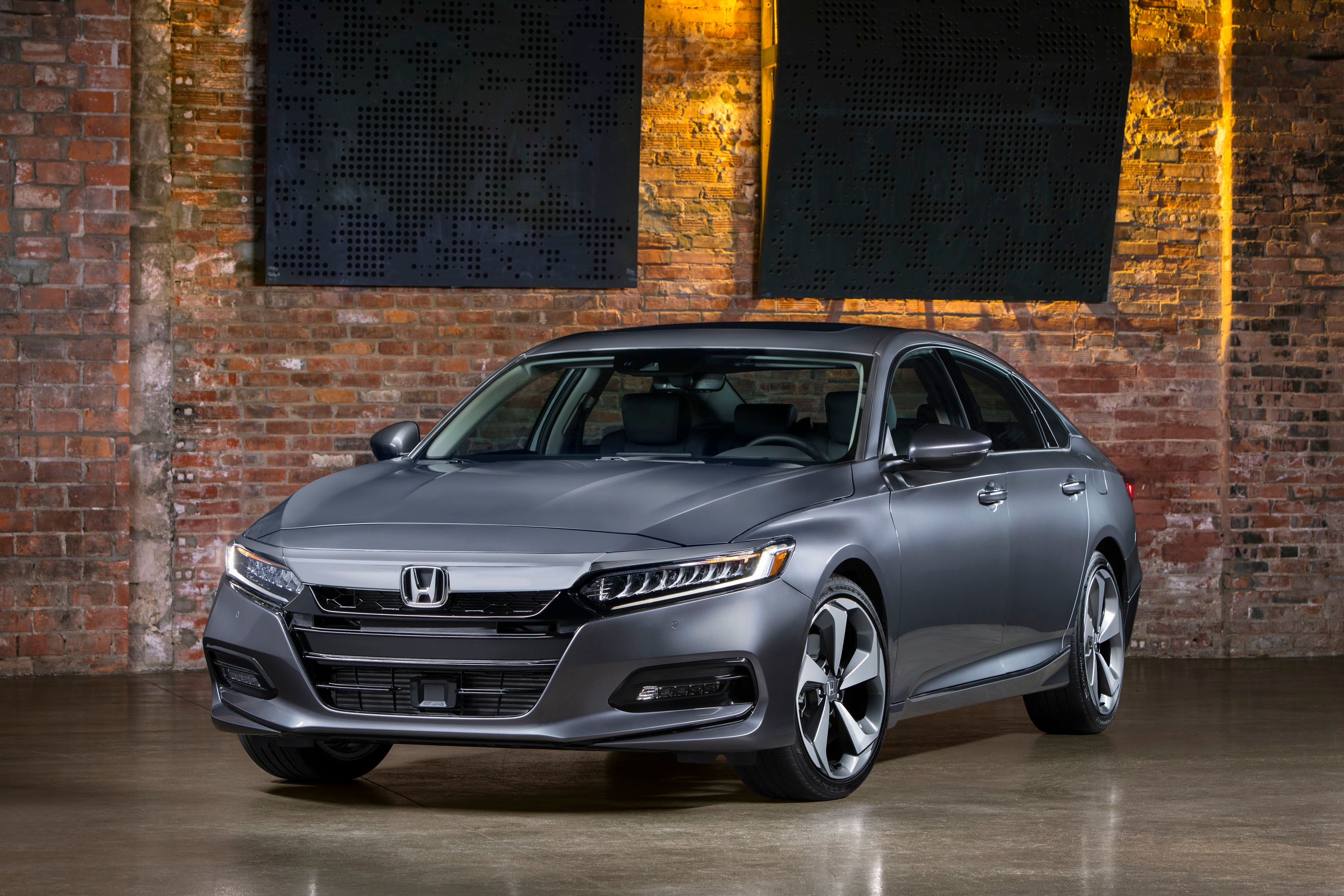The Honda Accord has a long, illustrious history that goes all the way back to 1976 when it started out life in Japan as a compact car. Over the years, it’s been through a total of nine generation changes, effectively jumping segments twice, from compact to mid-size and, more recently, to full-size. The most recent generation kicked off in 2013, but that was before Honda really got its act together, so this generation is destined to be short-lived, with 2018 ushering in the 10th-gen Accord. Highlights include two new engines, a 10-speed automatic transmission, an all-new body design, all-new chassis design, and the full suite of Honda’s safety and driver-assistance technology as standard equipment. It has more ultra-high-strength steel than any other Honda on the market today and features a tech-savvy cabin that has an almost-German look matched with a rather busy layout.
Inside and under the skin, the Accord has gone through a complete transformation while the exterior’s new look is more evolutionary than revolutionary. One could even argue that the teasers were a bit misleading when it comes to the lesser models, whose front end just looks cheap. Higher-end models look a little better up front, but the overall look is a little risky in a segment that’s got cars like the new Toyota Camry ready to reign supreme. Want to learn more about the new Accord and get a better look at what it offers for 2018? Keep on reading for a quick breakdown.
Continue reading for more.
Looks aren’t everything… or are they?
So, the new accord does have an attractive silhouette that hasn’t changed much from the outgoing model. However, the front end has gone through a massive transformation that includes a weird grille design the effectively blends the radiator grille and air dam into one big unit, with the jewel-eye headlights linked together via a gloss black strip in the middle. The grille, if that’s what you would call it, is actually recessed into the nose a bit, giving the accord a truly unique look up front. Honda would have done better if all models had a gloss black grille insert in the center instead of what’s happening now. The other big thing here is the weird overhang on the nose. Instead of extending the center of the hood further, Honda essentially cut it off, leaving room for a weird body insert that sits between the grille, headlights, and the end of the hood. This is what also bares the Honda emblem, so things just look a little wonky to me.
The side profile is gorgeous, though, featuring a gently curved upper body long and dominating crease above the side skirts, the fenders are a bit muscular up front around the headlights, while the rear quarters are rather obscure. Around back, the Accord looks much more normal for this day and age, with sleek, 3D taillights encompassing the corners and tiny exhaust outlets residing in the lower corners. The long slope of the roof gives it a fastback look that’s becoming ever so common these days, but that’s okay. The final verdict: this is a clear-cut case of looking better from behind.
|
Wheelbase (Inches) |
111.4 |
|
Length (Inches) |
192.1 in. |
|
Height (Inches) |
57.1 in. |
|
Width (Inches) |
73.2 in. |
A Cabin of Gold
Is it a BMW or a Honda? I can’t even tell. Okay, so it’s really not that bad, but Honda’s new infotainment display certainly gives the accord a slight German feel. It must be the floating nature. Of course, the two knobs also make it look like a futuristic etch-a-sketch, so there’s that, too. It measures eight inches in size and effectively brings an end to the two-screen layout. Well, unless you could the seven-inch display in the center of the instrument cluster. The infotainment system functions similar to most smartphones and offers up phone connectivity via Android Auto and Apple CarPlay. The Accord also gets the next iteration of Honda’s HondaLink – basically OnStar for Honda – that allows remote diagnostics, speed tracking (parents take note,) and remote locking and unlocking as well as remote start all from a smartphone.
The Touring trim gets a new six-inch head-up display that is customizable to an extent to go with a 4G LTE internet connection with a Wi-Fi hotspot and over-the-air system updates. Which audio system you get depends on what trim level you go with, and if you’re a person who likes good audio quality, you may want to skip on the lower trim levels. The entry-level LX trim gets a total of four speakers and 160 watts of mundane power, while the Sport and EX trims get a total of eight speakers good for 180 watts. Going with the EX-L or Touring trims will get you the best system available, with a total of 10 speakers, and 450 watts on tap. Lower trim levels get a single USB port while EX and above models feature dual, 2.5-amp ports.
As you can see from the cabin, it’s fairly sporty. The dash design is new, the seats get a new look, the trim elements are fresh. It’s actually a very attractive cabin, and as far as the interior goes, the Accord will give the competition a run for their money. And interior space is pretty good too, with a total of 105.6 cubic-feet of passenger volume and a seating capacity for five.
|
Headroom (front/rear) (Inches) |
39.5/37.3 |
|
Legroom (front/rear) (Inches) |
42.3/40.4 |
|
Shoulder Room (front/rear) (Inches) |
58.3/56.5 |
|
Hiproom (front/rear) (Inches) |
55.3/55.0 |
|
Cargo Volume (cubic feet) |
16.7 |
|
Passenger Volume (cubic feet) |
105.6 |
|
Seating Capacity |
5 |
The Greasy Bits
Just like the new Honda Civic, the new Accord will get a pair of turbocharged four-cylinders to provide all your motivational needs. Lesser models will get a 1.5-liter, all-aluminum four-banger with a total of 192 horsepower and 192 pound-feet of torque on tap. Full horsepower potential doesn’t kick in until 5,500 rpm, but torque comes in at a relatively low 1,500 rpm. The engine makes use of direct fuel injection, dual overhead cams, and a mono-scroll turbo with an electric wastegate.
Meanwhile, higher trim levels get the same turbo system, fuel system, and valve drive, but with 2.0 liters of displacement. Power is a decent 252 horsepower and 273 pound-feet of torque. In this case, maximum horsepower comes in even later at 6,500 rpm, but torque is still available as low as 4,000 rpm. Finally, there’s also a hybrid in the works. Details are scant at this time, but it will make use of a 2.0-liter (1,993 cc compared to the 1,996 cc version found in higher trim levels) along with multi-point injection and an electric motor with a lithium-ion battery. For now, we don’t know what kind of system output we’re looking at, but it will likely be somewhere in the 270-horsepower range.
Shifting duties on models equipped with the 1.5-liter are handled by Honda’s less-than-stellar CVT, but Sport models with the 1.5-liter can be optioned with a six-speed manual, so you’ll want to do yourself that favor, for sure. The 2.0-liter gets the new 10-speed automatic as standard, but in sport trim can also be optioned with the six-speed manual. I’m a manual guy, so I naturally default to the six-speed in this department, but you’ll probably want to give that 10-speed a try – it might not be too bad.
|
Engine Type |
In-Line 4-Cylinder with Mono-Scroll IHI RHF5 Turbo and Electric Wastegate |
In-Line 4-Cylinder with Mono-Scroll IHI RHF5 Turbo and Electric Wastegate |
In-Line 4 Cylinder |
|
Engine Block/Cylinder Head |
Aluminum-Alloy |
Aluminum-Alloy |
Aluminum-Alloy |
|
Displacement |
1,498 cc |
1,996 cc |
1,993 cc |
|
Horsepower (SAE net) |
192 HP @ 5,500 RPM |
252 HP @ 6,500 RPM |
TBA |
|
Torque (SAE net) |
192 LB-FT @ 1,500-5,000 RPM |
273 LB-FT @ 1,500-4,000 RPM |
TBA |
|
Fuel Injection |
Direct |
Direct |
Multi-Point |
|
Bore and Stroke |
73.0 mm / 89.5 mm |
86.0 mm x 85.9 mm |
81.0mm x 96.7mm |
|
Valve Train |
16-Valve DOHC |
16-Valve DOHC i-VTEC® |
16-Valve DOHC i-VTEC® |
|
Hybrid Battery |
Lithium Ion |
Final Thoughts
So, the Accord has an all-new look, all-new cabin, new bits and pieces under the body (including a new chassis and suspension) and new power plants to handle motivation. Still, I have to question whether or not it can handle the competition from models like the new Toyota Camry or even the Hyundai Sonata. I really like the cabin, and the power-delivery options aren’t bad in a world where tiny, turbocharged engines reign supreme, but I’m not sold on the look of the front end. I mean, it’s nice not to see big gaudy fake vents in the corners, but Honda could have done a lot better than this big, wide open grille that, on lower trim levels, looks like it’s literally missing an insert.
In the end, the car has been redefined, but I have a feeling that Honda will be issuing at least a small facelift in the next few years to make up for the weird front end on the lower models. But, what do you think? Can the 2018 Accord hold its own, or did Honda build an Edsel? Let us know what you think in the comments section below.
References
Read our full review on the 2018 Honda Accord.

